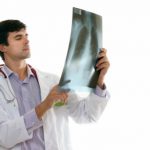 Atypical pneumonia, also known as walking pneumonia, is a form pneumonia, an infection of the lung, although there are important distinctions between the two varieties to keep in mind.
Atypical pneumonia, also known as walking pneumonia, is a form pneumonia, an infection of the lung, although there are important distinctions between the two varieties to keep in mind.
Back in the 1930s, pneumonia was actually the leading cause of death. Thanks to the modern medicine, most people under the age of 65 nowadays can endure pneumonia without any significant repercussions. Pneumonia is typically caused by infections and leads to the inflammation of the lungs. The air sacs in the lung fill with fluid, making it difficult to move oxygen to the bloodstream – and to breathe.
Advertisement
Walking pneumonia (atypical pneumonia) is a type of pneumonia, an illness that affects the upper and lower respiratory tract. It is dubbed ‘walking’, because many patients don’t even realize they have the condition because their daily living is not affected. Walking pneumonia does not involve hospitalization or bed rest as other types of pneumonia do, but still requires treatment to prevent complications.
Walking pneumonia vs. pneumonia: U.S. prevalence and economic impact
Walking pneumonia is fairly common, with nearly two million cases of walking pneumonia being mycoplasma pneumonia, accounting for one to 10 cases of 50 cases of community-acquired pneumonia. An estimated 8,000 to 18,000 patients are hospitalized for Legionnaires’ disease (legionella pneumonia) in the U.S. each year.
Just because pneumonia has a small impact on health doesn’t mean it has no impact. In fact, out of all deaths in children under five years old, 15 percent can be attributed to pneumonia. That figure added up to 922,000 for 2015. Worldwide, it’s still the largest cause of death for children within that age range.
The reason so many children die due to pneumonia is because less than one third actually get the antibiotics needed to fight the symptoms. Sub-Saharan Africa and South Asia make up the bulk of these deaths, with children being infected through airborne virus particles. However, pneumonia can also be spread through the blood, commonly taking place during birth in these regions.
Atypical pneumonia vs. pneumonia: Comparison table
| Clinical Feature | Pneumonia | Atypical pneumonia (walking pneumonia) |
|---|---|---|
| Types and species of microorganisms involved | Primarily bacterial, may be viruses Streptococcus pneumoniae, Staphylococcus aureus, Escherichia coli, and Haemophilia influenzae | Could be bacteria, fungi, protozoa, or viruses Chlamydophila pneumoniae, Mycoplasma pneumonia, Legionella pneumophila, Moraxella catarrhalis, syncitial virus, and influenza A virus |
| Aspiration involved | Can be caused by aspirating microbes from intestinal tract | Never caused by aspirations |
| Presence of extra pulmonary symptoms | No | Yes |
| Physical signs | Fever may be present | Fever, headache, sweating |
| Environment that stimulates pneumonia | Non-specific | Air-conditioned environments that are not well maintained |
| Amount and nature of sputum | Bulk sputum with cough | Sputum is mild or absent |
| Treatment regime | Treated with penicillin or cephalosporin | Treated with clarithromycin or erythromycin, Non-responsive to sulfonamides or beta- lactams |
| Involves upper respiratory tract infection | Not always | Frequently associated with irritating cough |
| Radiological presentation | Infiltration not seen in perihilar region and is localized centrally within the lobes and not towards periphery. Any lobes can be infected | Lobar consolidation absent as it involves restricted areas of lungs. Often reflects a primary infection before features of atypical pneumonia develop. This phase is also called occult pneumonia. Infiltration begins in the perihilar region and spreads to the periphery and not restricted to the lobes. Lower lobes are predominantly affected, other lobes may be involved too. |
*Source: Differencebetween.net
Difference between walking pneumonia and pneumonia signs and symptoms
Symptoms of walking pneumonia are typically mild, hence, patients may not even realize they have it, confusing the condition with a cold. Common symptoms of walking pneumonia include chills, cough, headache, fever, muscle aches, muscle stiffness, loss of appetite, shortness of breath, and rapid breathing.
In mycoplasma pneumonia specifically, a rash may appear, while those with legionella pneumonia may also experience diarrhea and confusion.
Some of the pneumonia symptoms overlap with those of the cold, but the condition also has discerning symptoms of its own distinguishing it from a common cold. Some symptoms of pneumonia include the following:
- Coughing mucus or blood
- Fatigue
- Difficulty breathing
- High fever
- Sweating with chills
- Little to no appetite
- Pain in the chest that worsens with cough
Again, any combination of these symptoms likely indicate you have the pneumonia. These symptoms may mimic a cold, but in case of pneumonia it’s important that you treat these symptoms immediately to prevent any more serious consequences.
Comparing atypical pneumonia and pneumonia causes
 There are three main types of walking pneumonia:
There are three main types of walking pneumonia:
Mycoplasma pneumonia: A typically mild type caused by mycoplasma bacteria. Symptoms are similar to those of a cold or flu, and patients are rarely hospitalized with this type of pneumonia. In some cases, mycoplasma pneumonia can result in complications that require treatment.
Chlamydophila pneumonia: Caused by chamydophila bacteria, this type commonly affects school-aged children.
Legionella pneumonia: Caused by Legionella pneumophila bacteria, this type is not spread person to person, unlike other types of pneumonia. This is a more serious type of walking pneumonia, and can result in respiratory failure and death.
The underlying cause depends on the type of walking pneumonia you have, but walking pneumonia is generally caused by bacteria, virus, fungus, chemicals, inhaled food, and other infectious agents that enter the nose, throat, windpipe, or lungs. Specific bacteria that can cause walking pneumonia include mycoplasma, chlamydophila, and legionella.
Pneumonia can be caused by the same viruses and in the same manner as a common cold or flu – that is, virus droplets in the air or hand touching. If the virus remains in the nose and throat area, it only develops into a cold. However, if it reaches down to the lungs, then it causes pneumonia, which is a greater threat to your body.
Besides the above, mycoplasma bacterium is another cause of pneumonia. Mycoplasma pneumonia is sometimes referred to as “walking pneumonia” because of its mild effects. People with this form of pneumonia are not bedridden and can, in fact, walk around as if they are healthy.
More severe types of pneumonia can actually be caused by bacteria already in your throat. In most instances, the immune system usually takes care of these bacteria and keeps them at bay, so the infection doesn’t spread anywhere else. But when the immune system is compromised for any reason – cold, cancer treatment, etc. – these bacteria can find their way to the lungs and cause pneumonia.
Smokers, heavy drinkers, infants, and seniors are probably the highest-risk groups for getting pneumonia. Also, those who have recently undergone surgery or have a chronic illness are also at an increased risk.
Walking pneumonia vs. pneumonia: Risk factors and complications
Anyone can catch pneumonia, but certain groups may be at a higher risk to develop the respiratory condition than others. Walking pneumonia is commonly seen in older children and adults under 40. Individuals residing in crowded areas like schools, prisons, and shelters are at a higher risk of walking pneumonia. Smokers and those with chronic illness or a weakened immune system are also at a greater risk for contracting atypical pneumonia.
Risk factors for pneumonia include being a smoker, having a recent viral infection, experiencing difficulty swallowing (due to stroke or other health condition), having chronic lung diseases, cerebral palsy, or another serious illness like heart disease or cirrhosis, living in a nursing facility, having impaired consciousness, recovering from a recent surgery or trauma, or having a weakened immune system.
Complications of pneumonia include difficulty breathing, bacteria entering the bloodstream causing a worsened infection, fluid accumulation around the lungs, and lung abscess where pus forms in the lung cavity.
Difference between atypical pneumonia and pneumonia: Diagnosis and treatment
 To diagnose walking pneumonia, your doctor will perform a physical exam and request a chest X-ray, a culture of mucus from your lungs, a sputum gram stain test, a throat swab, a complete blood count, as well as blood tests for antibodies and blood cultures.
To diagnose walking pneumonia, your doctor will perform a physical exam and request a chest X-ray, a culture of mucus from your lungs, a sputum gram stain test, a throat swab, a complete blood count, as well as blood tests for antibodies and blood cultures.
Walking pneumonia is commonly treated with antibiotics and over-the-counter medications to control fever. You shouldn’t take any cough medicine without your doctor’s okay as it can make it difficult to spit up mucus.
You should also drink plenty of fluids and get rest to allow your body to heal.
Some effective tips to lower your risk of walking pneumonia include exercising regularly, eating well-balanced meals, getting proper sleep and rest, washing hands frequently, abstaining from smoking as it damages your lungs, and covering your mouth and nose when you cough or sneeze.
Advertisement
For pneumonia, doctors will check to see if your glands are swollen and test your temperature for a fever. Since pneumonia takes place in the lungs, they will use a stethoscope to listen to your breathing. A blood test will also be able to determine whether you have pneumonia, and X-ray will show any buildup of fluid in the lungs.
When it comes to treating pneumonia, following the directions to the exact specifications is important. People tend to want to stop taking any prescriptions or lighten their dose as they begin to feel better. But this is not advisable. Take the medication for as long as your doctor has instructed.
Preventing pneumonia can be done effectively through diet. Eating a balanced diet that includes plenty of fruits and vegetables is a great start. Getting lots of rest is also beneficial and helps keep your immune system strong. Vaccination is also a great idea and something everyone should do, particularly around cold and flu season. We’ve already mentioned the importance of handwashing, which prevents the bacteria from spreading, but if you notice that you have a cough or are feeling off for more than three or four days, then go see your doctor.
